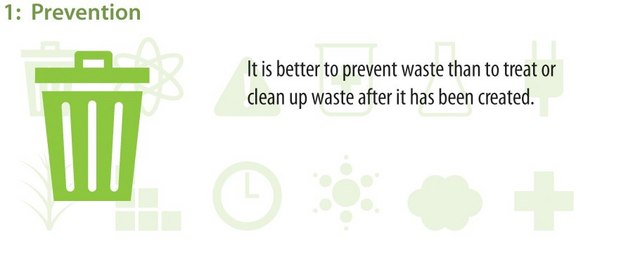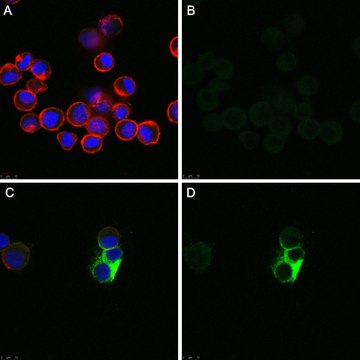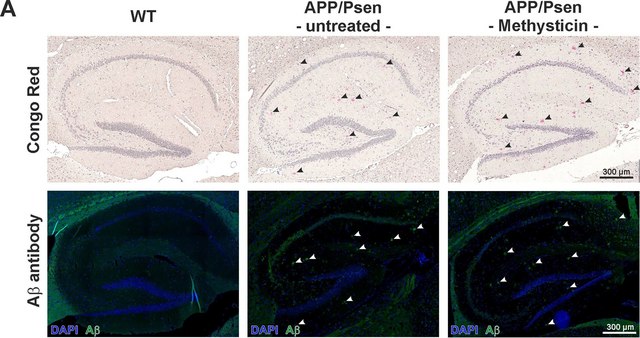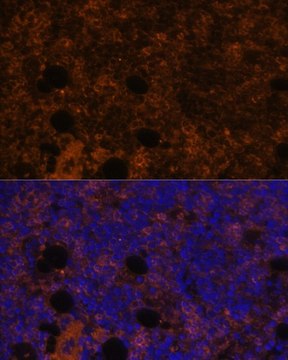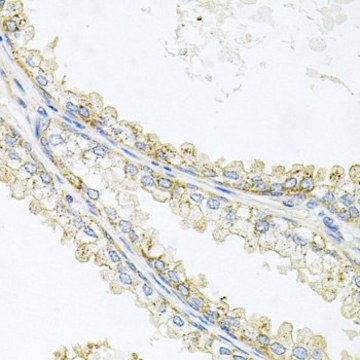推荐产品
一般描述
人副流感病毒3型(PI3病毒)可引起婴儿轻度至重度呼吸道感染。PI3病毒是一种包膜RNA病毒,其外表面具有两种糖蛋白:血凝素-神经氨酸酶(HN)和融合(F)。已知这两种糖蛋白负责感染过程的开始和进展
免疫原
人副流感病毒3型融合糖蛋白
法律信息
CHEMICON is a registered trademark of Merck KGaA, Darmstadt, Germany
未找到合适的产品?
试试我们的产品选型工具.
储存分类代码
10 - Combustible liquids
WGK
WGK 1
闪点(°F)
Not applicable
闪点(°C)
Not applicable
Antiviral effects of glycosylation and glucose trimming inhibitors on human parainfluenza virus type 3
Tanaka, Yoshikazu, et al
Antiviral research, 72, 1-9 (2006)
M A Horga et al.
Journal of virology, 74(24), 11792-11799 (2000-11-23)
Viral interference is characterized by the resistance of infected cells to infection by a challenge virus. Mechanisms of viral interference have not been characterized for human parainfluenza virus type 3 (HPF3), and the possible role of the neuraminidase (receptor-destroying) enzyme
Laura M Palermo et al.
Journal of virology, 83(13), 6900-6908 (2009-04-24)
Three discrete activities of the paramyxovirus hemagglutinin-neuraminidase (HN) protein, receptor binding, receptor cleaving (neuraminidase), and triggering of the fusion protein, each affect the promotion of viral fusion and entry. For human parainfluenza virus type 3 (HPIV3), the effects of specific
Ying Liu et al.
Virus genes, 56(1), 37-48 (2019-11-27)
Human parainfluenza virus type 3 (HPIV3) causes the majority of childhood viral pneumonia around the world. Fusing the viral and target cell membranes is crucial for its entry into target cells, and the fusion process requires the concerted actions of
Wenyan Xie et al.
PloS one, 10(8), e0136474-e0136474 (2015-08-26)
Human parainfluenza virus type 3 (HPIV3) can cause severe respiratory tract diseases in infants and young children, but no licensed vaccines or antiviral agents are currently available for treatment. Fusing the viral and target cell membranes is a prerequisite for
我们的科学家团队拥有各种研究领域经验,包括生命科学、材料科学、化学合成、色谱、分析及许多其他领域.
联系技术服务部门